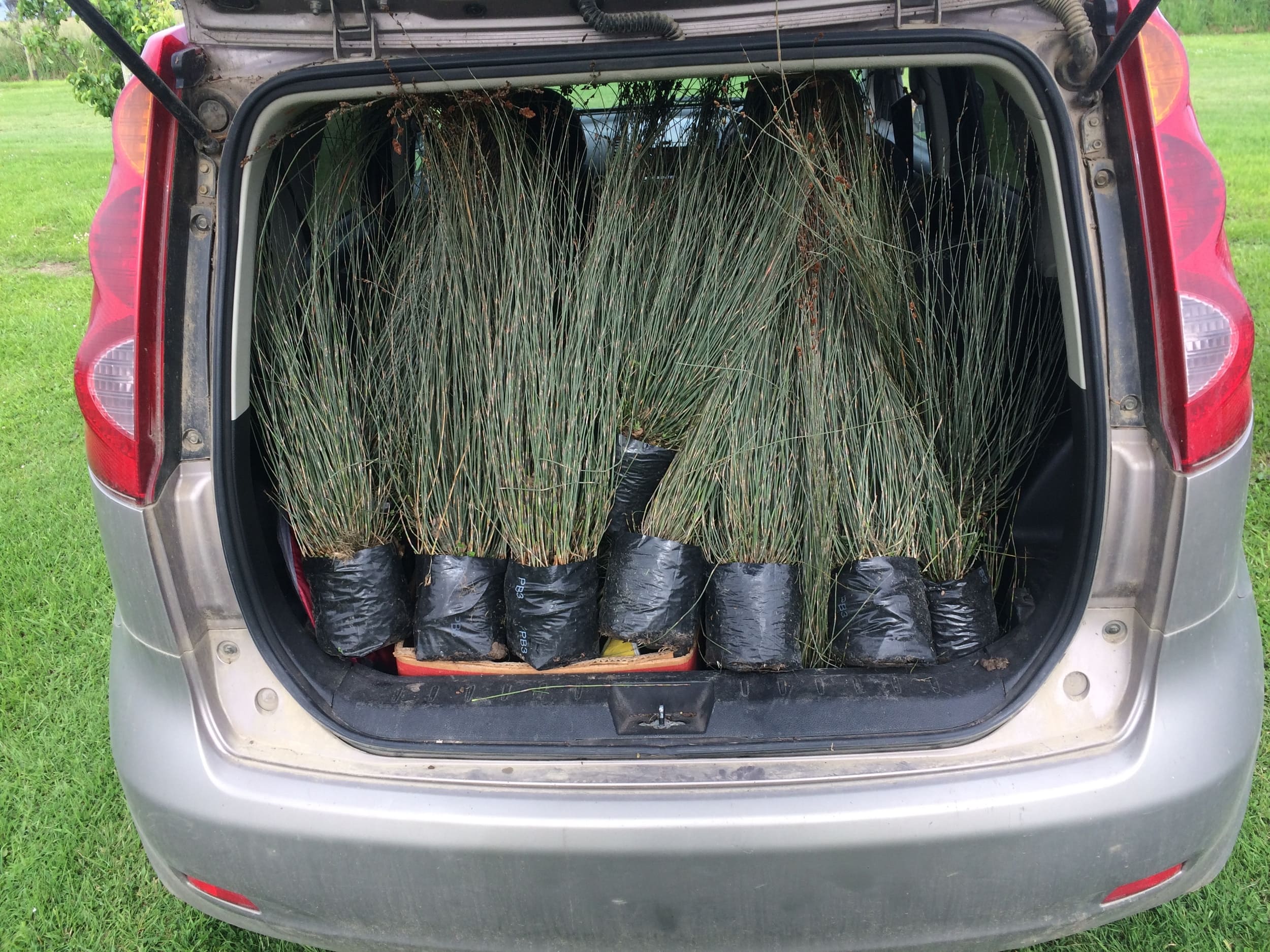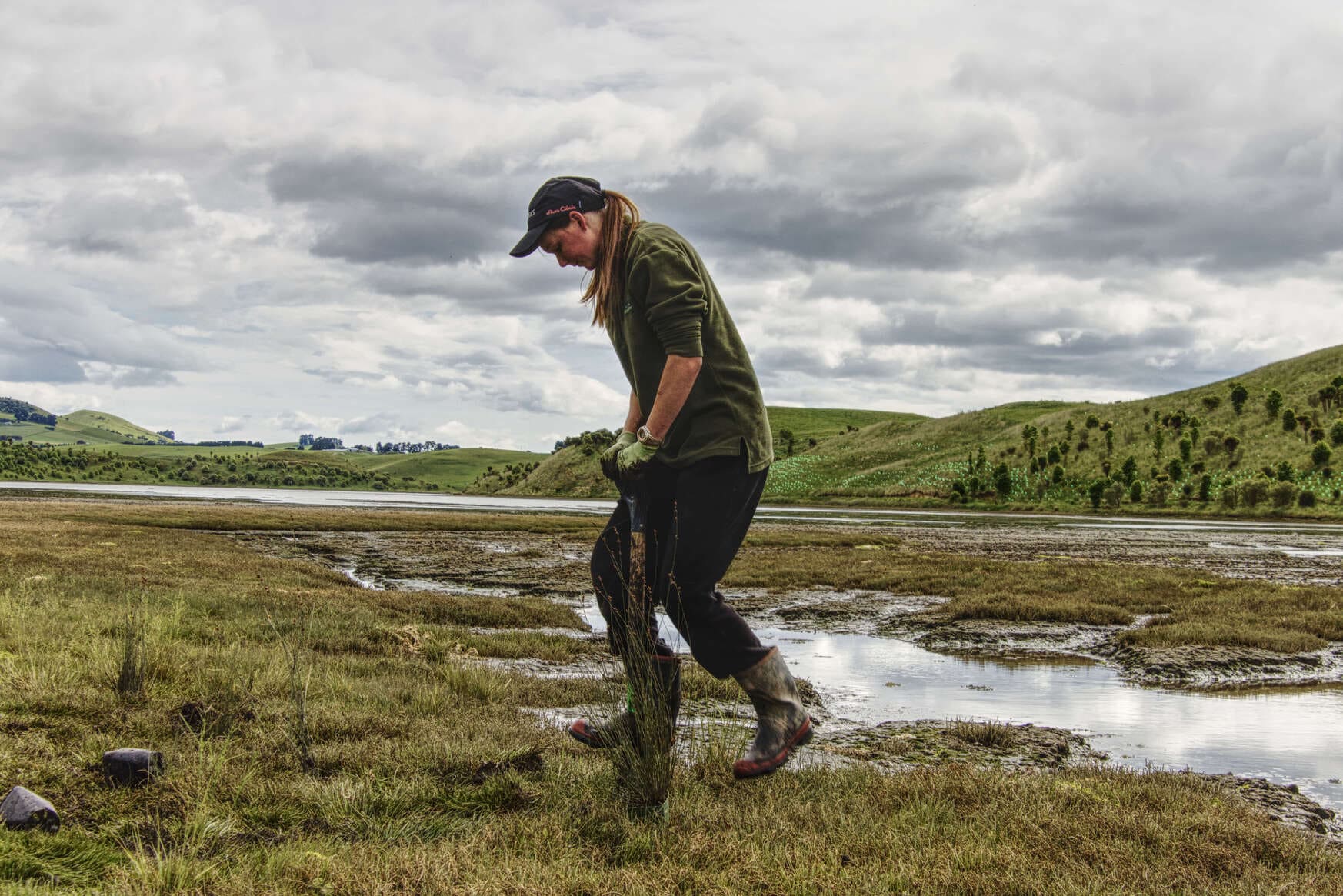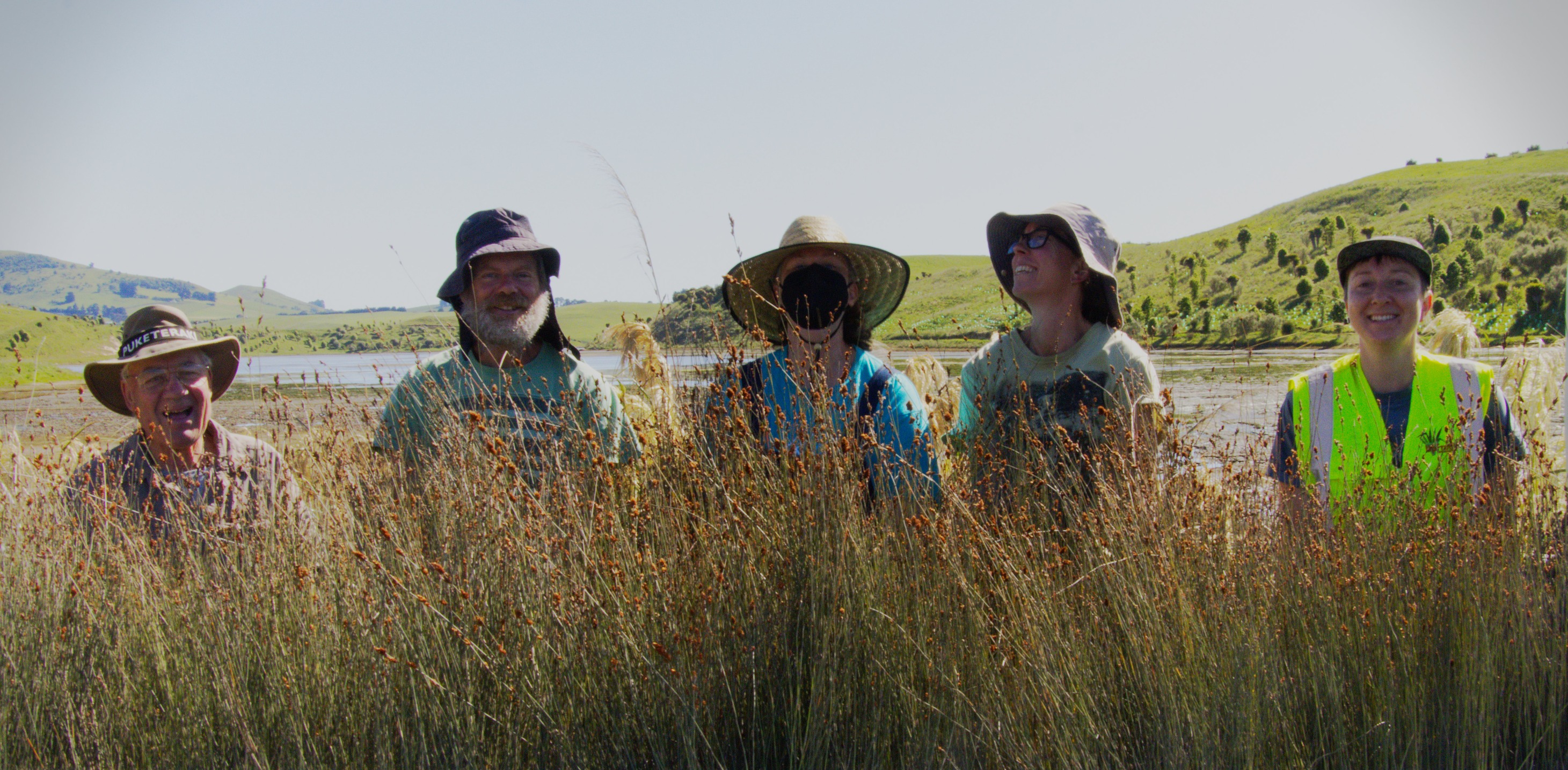The project was largely funded by Toitū Te Hakapupu; a joint initiative between the Otago Regional Council, Kāti Huirapa Rūnaka te Puketeraki and the Ministry for the Environment.
“We’re trialling what the optimum spacing and placement of oioi should be to improve biodiversity, habitat restoration and water quality of Te Hakapupu estuary” says Puketeraki Takata Tiaki, Brendan Flack.
“It’s too early to tell, but we are looking forward to seeing the results, and being part of the wider programme to improve the estuary and river.”
The Te Hakapupu estuary is fed by Pleasant River, south of Palmerston in Otago.
Colourful, native wetland rushes
In an attempt to reintroduce these colourful, native wetland rushes to the area, the kaitiaki (guardians) at Kāti Huirapa Rūnaka ki Puketeraki and some residents at Tūmai Beach farm park have undertaken this as a planting trial to learn the best ways to re-establish the plant around the estuary.
Oioi, or jointed wire rush, is commonly found growing near the coast, in damp sand dunes or salt marshes. Oioi means 'to shake gently', referring to its swaying in the wind. It is often found growing alongside sea rush (Juncus kraussii var. australiensis) and the easiest way to identify oioi is by the dark bands along the stem that give the stem a slight zigzag appearance.

Oioi ready to be planted.
Tūmai is a rural neighbourhood in East Otago, between Waikouaiti and Palmerston, with a small creek nearby that flows north into the estuary of Te Hakapupu (Pleasant River).
Four-year partnership project
ORC Project Delivery Specialist, Melanie White says the Toitū Te Hakapupu initiative is a four-year partnership project with Kāti Huirapa Rūnaka ki Puketeraki focussed on improving water quality in the catchment.
Other benefits we anticipate are increased biodiversity, planting native vegetation, helping foster rūnaka and community connection, and a long-term catchment restoration management plan co-developed with the local rūnaka and the community, he says.
"We’re delighted to support the planting and collaborative effort of the residents of that subdivision, and the local rūnaka, to improve the health of the Te Hakapupu estuary.”
The plants have been grown to a robust size over the past few years by the marae nursery and were heavily discounted to enable this planting trial to happen, she says.
“This is what the project is about – supporting our partners, but also the community supporting the community to protect and improve the health of the river and estuary, which is critical to the local ecology, economy and history” says Ms White.
1950’s causeway created
In the 1950’s, a causeway was created to convert 26 hectares of the estuary into farmland and oioi ceased to exist in the area. In 2009 the causeway was removed to reinstate tidal flows when the Tūmai Beach farm park subdivision was created.
To date, 1664 oioi plants have been planted throughout the South Arm of Te Hakapupu estuary and along the edges of a farm feeder stream that empties into the estuary, with the bulk of the planting completed by the Puketeraki Native Plant Nursery staff, Tūmai residents and volunteers.

Shaunae Coombes, nursery kaimahi (worker).
As well as planting oioi, 59 ‘salt grass’ (Puccinellia stricta) clumps have been planted in the saltmarsh meadow. This is a native species that also occurs in Australia and thrives in saline conditions so is common down the eastern coast of Te Wai Pounamu (South Island).
Over the next three years, the survival, growth and spread of the oioi and other experimental treatments will be monitored to show the most cost-effective placement and spacings of future oioi restoration planting in Te Hakapupu and beyond.


Part of the planting team.
Keep up to date with other community efforts on the Toitū Te Hakapupu: The Pleasant River Restoration Project website and Friends of Tūmai Facebook page.
